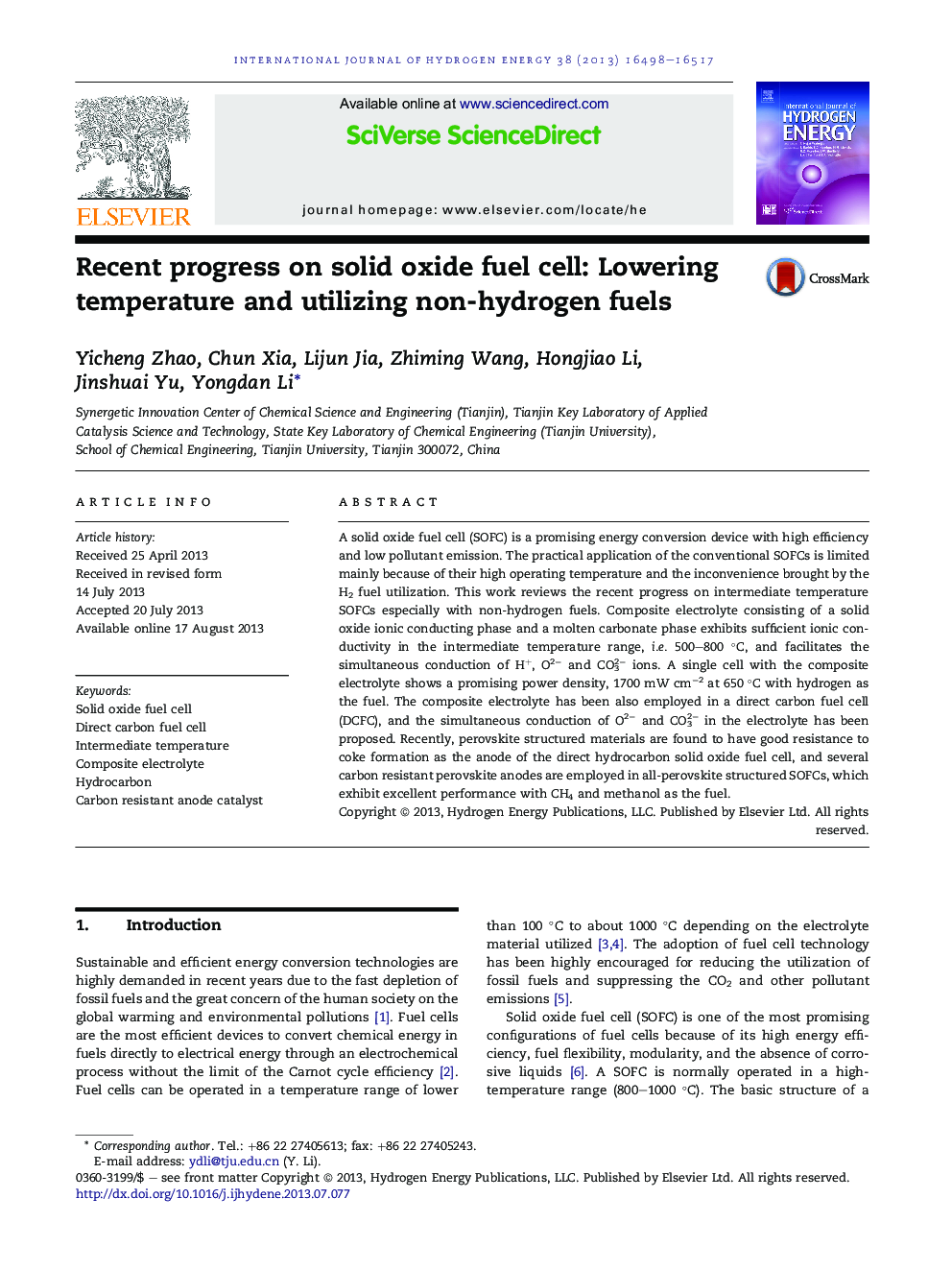| Article ID | Journal | Published Year | Pages | File Type |
|---|---|---|---|---|
| 1274215 | International Journal of Hydrogen Energy | 2013 | 20 Pages |
•The development of composite electrolyte and ionic conduction in it are reviewed.•Four kinds of electrolyte for direct carbon fuel cell are summarized.•The carbon electrochemical oxidation in direct carbon fuel cell is discussed.•Anode materials for direct hydrocarbon solid oxide fuel cell are reviewed.
A solid oxide fuel cell (SOFC) is a promising energy conversion device with high efficiency and low pollutant emission. The practical application of the conventional SOFCs is limited mainly because of their high operating temperature and the inconvenience brought by the H2 fuel utilization. This work reviews the recent progress on intermediate temperature SOFCs especially with non-hydrogen fuels. Composite electrolyte consisting of a solid oxide ionic conducting phase and a molten carbonate phase exhibits sufficient ionic conductivity in the intermediate temperature range, i.e. 500–800 °C, and facilitates the simultaneous conduction of H+, O2− and CO32− ions. A single cell with the composite electrolyte shows a promising power density, 1700 mW cm−2 at 650 °C with hydrogen as the fuel. The composite electrolyte has been also employed in a direct carbon fuel cell (DCFC), and the simultaneous conduction of O2− and CO32− in the electrolyte has been proposed. Recently, perovskite structured materials are found to have good resistance to coke formation as the anode of the direct hydrocarbon solid oxide fuel cell, and several carbon resistant perovskite anodes are employed in all-perovskite structured SOFCs, which exhibit excellent performance with CH4 and methanol as the fuel.
Graphical abstractFigure optionsDownload full-size imageDownload as PowerPoint slide
